Hunting and golf may seem completely different, but from a technological perspective, you will find that they share a common piece of equipment: rangefinders. For those who love both sports at the same time, it is a question whether golf rangefinders can be used for hunting. The answer is far from being as simple as it seems.
This article will introduce the features of hunting and golf rangefinders, their unique functions, and how to apply golf rangefinders to hunting. We will also explore strategies for using rangefinders and recommend top-of-the-line golf rangefinders suitable for hunting occasions.

What Is a Golf Rangefinder?
A golf rangefinder is a device used by golfers to measure the distance to specific points on a golf course, such as the flagstick, hazards, or trees. The main purpose of the devices is to aid golfers select the best club and to improve their game by providing precise distance measurements.
Key Features of Golf Rangefinders:
- Pin-seeking technology:Golf rangefinders can be optimized so that they identify and target flagsticks, even if they are obscured by background noise.
- Slope mode: Many designs include compensation for slope, and adjusting distances according to elevation changes.
- Compact design: Lightweight as well as portable. They're simple to take around golf courses.
- High accuracy: Typically offers precise measurements in 1 mile or so, essential to fine-tune shots.
These devices are designed specifically to play golf, however their features and technology frequently offer crossover possibilities with other sports like hunting.
What Is a Hunting Rangefinder?
A hunting rangefinder serves a similar purpose to its golfing counterpart: measuring distances. However, it is designed with the unique challenges of hunting in mind. However, it was specifically designed with the difficulties that hunters face in their minds. It doesn't matter if you're watching for games at a distant distance setting the bow, or shooting using a rifle hunting rangefinder will provide the vital distance data required for accuracy and effectiveness.
Key Features of Hunting Rangefinders:
- Longer range: Typically determine distances of more than 1,000 yards, to accommodate large hunter landscapes.
- Target priority modes:Include options for scanning objects in the background or foreground in accordance with the hunting conditions.
- Durable design: Built to withstand tough outdoor conditions, such as dust, rain, or extreme temperatures.
- Angle compensation:Crucial for hunters aiming at angles that are steep that are difficult to see, like in the mountains or from an elevated treestand.

Differences Between Golf and Hunting Rangefinders
While golf and hunting rangefinders operate on similar principles, their designs cater to distinct needs. Below are the major differences:
1. Target Priority Modes
One of the most important distinctions is in the way each device prioritises the targets it.
- Golf Rangefinders: These rangefinders come with a first-target priority mode which is focused on the closest object within the view field. This feature is essential during golf, when you need to hold onto a flagstick, regardless when there are trees or other structures behind. For instance the golfer is able to quickly identify the flag with no interference from any objects that are beyond.
- Hunting Rangefinders: Hunting rangefinders typically use the distant-target priority mode that is focused on objects that are further from the target, such as deer hiding behind brush or tree. This mode allows hunters to precisely measure the distance to their targets without causing confusion with the foreground elements such as branches or leaves.
2. Range Capabilities
The range of each device reflects the typical distances involved in golf versus hunting:
- Golf Rangefinders: The measuring range for golf rangefinders typically extends between 400 to 800 yards. They are great for golf courses where distances are less and the targets such as flags, bunkers or hazards fall within the range of.
- Hunting Rangefinders: Hunting often involves measuring distances in vast, open environments. Rangefinders for hunting are made to measure distances that exceed 1,000 yards, which allows hunters to find targets from large distances. Some models that are of high-end quality can be able to measure 220 plus yards which makes them perfect for precise shooting or playing spotting games over large areas.
3. Durability and Build Quality
The environments in which golf and hunting rangefinders are used influence their construction:
- Golf Rangefinders: Golf rangefinders have been designed for moderate outdoor conditions. They're light and compact, with a focus on the portability of their design over toughness. Although many of them are splash-proof however, they're typically not built to withstand harsh weather or harsh handling.
- Hunting Rangefinders: Hunting rangefinders have been designed to withstand the harsh conditions of outdoor use including rain, mud, or frigid temperatures. They're usually water-resistant or completely waterproof, and have shock-resistant housings to withstand falls or bumps in a hunt excursion. This robust construction provides that the equipment is reliable even in demanding conditions.

4. Display and Reticle Design
The display technology and reticle designs differ based on the lighting and precision needs of the user:
- Golf Rangefinders: The displays of golf rangefinders are suited to sunny, daylight conditions. They usually feature simple, clear readouts that display important information such as the distance, slope and. Certain models have vibrantly colored reticles that help you lock onto a flagstick with green background.
- Hunting Rangefinders: Hunting typically occurs under low-light conditions, for example, the early morning hours or dusk. To make this possible the majority of hunting rangefinders have illumination of reticles or display with low-light settings that permit hunters to read the readings clearly even in dim lighting. Certain models with advanced features also include ballistic data including holdover and drop compensation to aid in long-range shooting.
5. Magnification Levels
The rangefinder's magnificence capabilities are a reflection of the distances to which they are commonly used:
- Golf Rangefinders:Golf rangefinders usually have smaller magnification levels that are five times or six times. These magnification levels are adequate to spot targets such as flagsticks or bunkers on the golf course in which distances are small and visibility is good.
- Hunting Rangefinders: Hunting rangefinders usually have greater magnification that include 7x or even 8x, which give a clear perspective on distant objects. This is especially important when finding and identifying game in vast or dense terrains in which a higher magnification could make an important difference in a shot that is successful or a missed shot.
6. Additional Features
The unique needs of hunters and golfers require the inclusion of certain characteristics in their rangefinders:
- Golf Rangefinders:Many models for golf include options such as pin-seeking mode that helps to secure the flagstick, as well as slope adjustment, which adjusts for changes in elevation to provide an accurate yardage. However, these functions tend to be simpler than the features found within hunting-related models.
- Hunting Rangefinders:Hunting rangefinders typically include advanced features, including ballistic compensation to users of firearms. They calculate variables such as bullet drop and wind drift, providing hunters with important information to ensure accurate long-range shots. Scanning options for tracking the movement of targets is also popular.

Can a Golf Rangefinder Be Used for Hunting?
Yes, you can use a golf rangefinder for hunting, but with some caveats. The best choice is based on the kind of hunt and the particular features of the rangefinder for golf. For instance, if you're hunting in open areas in which distances are small and easy to see, a rangefinder for golf might be adequate. In dense forest areas or shooting long distances the shortcomings (like smaller range and absence of priority modes for targets) could be a hindrance.
Tips for Using a Golf Rangefinder for Hunting
If you're thinking about using a golf rangefinder to go hunting, here are a few suggestions to increase its effectiveness:
1. Understand Your Rangefinder’s Capabilities
Before you rely on a rangefinder designed for golf to hunt be familiar with its requirements.
- Maximum Range: Golf rangefinders often have a shorter maximum range than hunting models, typically up to 400–800 yards. Ensure this range meets your hunting needs, especially if you’ll be targeting distant game in open fields.
- Accuracy Levels:Golf rangefinders are precise, but their target detection might struggle in densely wooded or cluttered environments. Understand its accuracy and limitations to avoid misjudging distances during critical moments.
- Target Locking: Since golf rangefinders prioritize the nearest object (first-target priority mode), practice identifying targets in situations where background clutter might interfere.
If your hunting environment frequently requires longer ranges or complex target acquisition, consider either upgrading to a hybrid rangefinder or using additional tools.
2. Test in Similar Conditions
Tests on the field are essential to determine how well your rangefinder for golf performs in the kinds of conditions that you'll find yourself in when exploring.
- Simulate Hunting Scenarios: Test the rangefinder in terrain similar to your hunting area. If you’ll be in wooded areas, check how well it can differentiate between objects like trees and your intended target. For open fields, measure its maximum range and assess its accuracy at long distances.
- Lighting Conditions:Use the rangefinder during low-light conditions, like the early morning or evening hours to check if the display remains clear and legible.
- Obstructed Targets: Practice locking onto objects that are partially hidden by brush or foliage to learn about its strengths and limitations.
Regular testing will ensure that you aren't taken by surprise by performance issues on an outing.

If your rangefinder for golf has an option for slope compensation this can prove to be a useful tool in hunting, especially on uneven terrain.
- How It Helps:Slope mode adjusts the measured distance to take into account elevation changes, allowing more precise readings for angled shots. This is especially helpful in hunting with a treestand, or playing a game of targeting on hillsides.
- Practice with Angled Shots: If you plan to use this feature, you should practice taking measurements and making adjustments to steep angles. Understanding how you can interpret the measurements increase your accuracy when shooting targets that are downhill or uphill.
4. Maintain Clear Lines of Sight
Golf rangefinders perform best in open terrain, therefore searching in dense forests or a muddy terrain might require extra effort to locate good areas of vision.
- Positioning:Move to a position that allows you to be able to see your target, free of obstructions like rocks or branches. Because golf rangefinders do not have distant-target priority, background clutter can cause confusion for the device.
- Make use of it as a spotting tool in open areas it can serve as a spotting tool measuring distances between landmarks or possible targets. This can assist you in planning your shooting and movements more efficiently.
- Patience is Key:In obstructed environments, you may need to scan multiple angles to lock onto the correct target. Be patient and adjust your position as necessary.
5. Carry a Backup Device
Although a rangefinder for golf can be effective in specific conditions, it's prudent to have an alternate alternative, particularly during critical moments of hunting.
- Dedicated Hunting Rangefinder:If possible you can carry a rangefinder for hunting with a greater distance and more advanced features such as distant-target priority. This will ensure you're ready for situations where the rangefinder for golf isn't enough.
- Alternative Tools: Different tools such as the compass, map, or GPS can be useful backups to navigation and distance estimation. These tools ensure that you're not entirely dependent on your rangefinder when you're in unfamiliar or difficult conditions.
- Battery Management: Most golf rangefinders have long-lasting batteries However, carrying extra batteries or portable chargers can save your life if your device is running out of energy during the hunt.
6. Familiarize Yourself with the Device’s Features
To utilize a rangefinder for golf efficiently for hunting it, you must master the existing features of it:
- Pin-Seeking Mode: Originally developed to lock onto golf flagsticks, this mode could use it to identify specific and clear objects, like the game animal in a field.
- Continuous Scanning: A few rangefinders for golf have scanning modes that allow you to gauge different distances in real-time when you scan the landscape. This is particularly useful to track moving targets or gauging the location of several landmarks in the area you hunt.

The Best Golf Rangefinder for Hunting: Gogogo GS34
If you're searching for the best golf rangefinder for the money that can also double as a hunting rangefinder, the Gogogo GS34 is an excellent choice. This device offers a blend of affordability, functionality, and versatility that caters to both golfers and hunters.
Key Features of the Gogogo GS34:
- 6x Magnification:Provides clear views for medium-range golf and hunting needs.
- Range Capability:Measures distances up to 1200 yards, suitable for many hunting scenarios.
- Slope Adjustment:Includes slope technology for both golf and angled hunting shots.
- Pin-Seeking Mode:Useful for spotting targets in clear areas.
- Lightweight and Portable: Easy to carry during long hikes or on the golf course.
- Affordable Pricing: One of the most budget-friendly options with premium features.
Why It’s Great for Hunting:
Its Gogogo GS34 may lack some sophisticated features that are found in dedicated rangefinders for hunting, like the ability to target distantly or have extreme longevity, however it does make up for that with its the flexibility and price. For those who are casual hunters or who are interested in both It's an excellent starting point that won't break the bank.

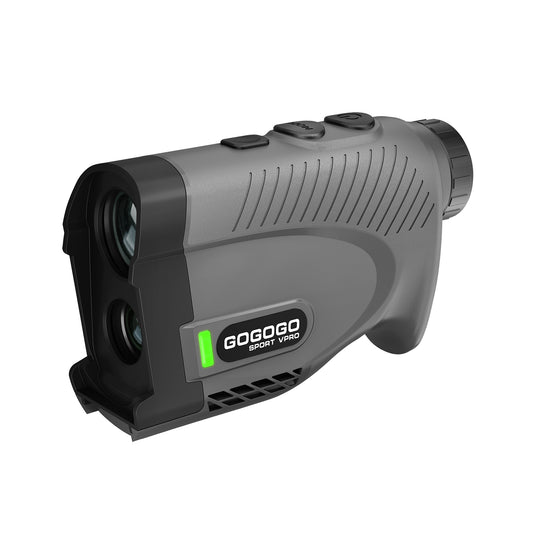
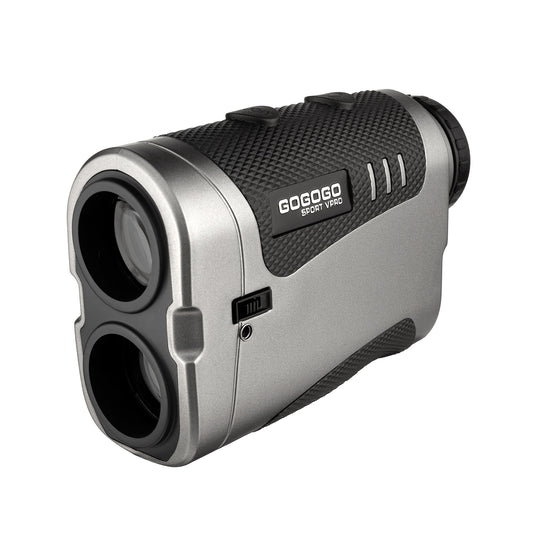
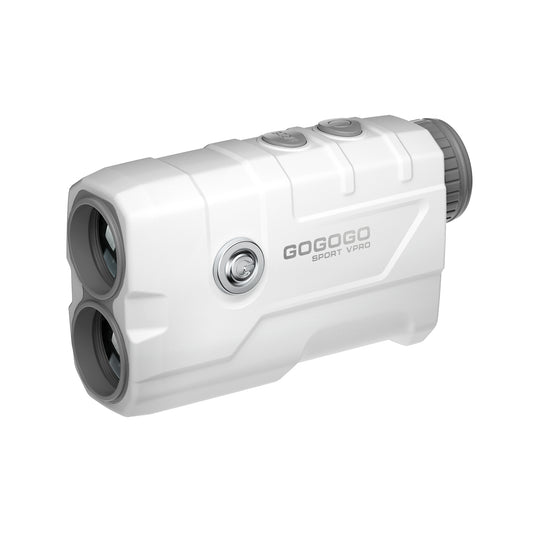
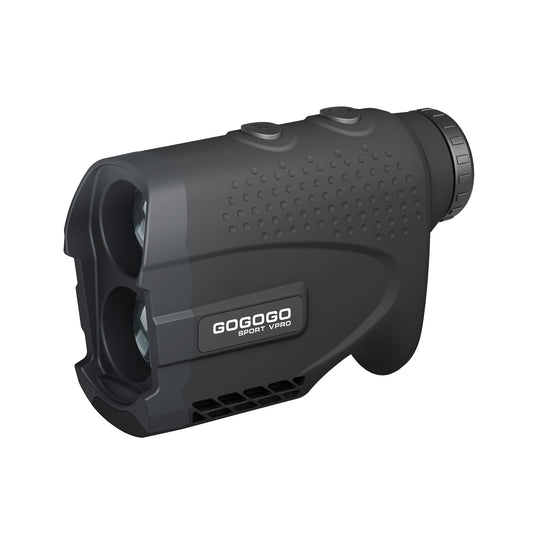

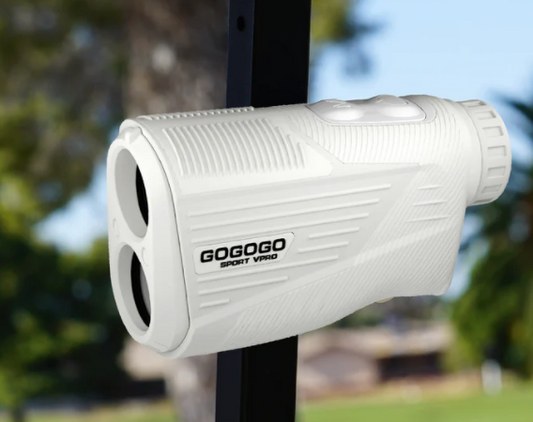

![[2025] The Ultimate Guide to Pinseeker Rangefinders for Golfers](http://gogogosport.com/cdn/shop/articles/gogogo_sport_vpro_pinseeker_rangefinder.png?v=1757993796&width=533)